Top 8 Paddleboarding Tips for Beginners
Whether you're brand new to stand-up paddleboarding (SUP) or just want to sharpen your skills, these best beginner-friendly tips will help you paddle smarter, stay safe, and make the most of your time on the water. SUP is one of the most accessible water sports out there—it combines balance, full-body strength, and a calming connection to nature. And, just like anything fun and worthwhile, it only gets better with a bit of practice and the right guidance
Your paddleboarding journey starts here—choosing the right board is the foundation for everything else. Here are the most important paddleboarding tips for beginners, covering everything from choosing your gear to paddling with confidence and staying safe on the water.
1. Choose the Right Board (And Set Yourself Up for Success)
The first step to a great paddleboarding experience starts with choosing the right board. Not all paddle boards are created equal, and finding one that matches your size, skill level, and goals can completely change your experience. Beginners should look for wider boards for more stability, as well as longer boards for easier balance and tracking. If you're looking for speed or long-distance paddling, a touring paddle board might work better. For activities such as fishing, yoga and multi-person paddleboarding, go for bigger boards. Inflatable SUPs are a popular choice for portability and comfort.
If you're planning to use your SUP board for a specific activity, consider a board designed for that purpose. Touring boards are longer and narrower, offering speed and glide for long-distance paddling. Yoga SUPs are typically wide and soft underfoot, with full-length deck pads for comfort. Fishing SUPs come with added storage, mounts, and stability. There are even multi-person paddle boards for families, friends, or paddling with pets. Inflatable beginner SUPs (iSUPs) are ideal for most beginners as they’re lightweight, easy to transport and store, and comfortable to stand on for long periods.
Picking the right paddle board isn’t just about comfort—it’s about building confidence. When your board feels stable beneath you, you're more relaxed, more focused, and far more likely to enjoy the ride. When your board feels stable under your feet, you’re more likely to enjoy the experience, stay relaxed, and make faster progress. So take your time selecting the right one, and when in doubt, go wider and thicker for more stability.
Here’s a quick breakdown to help you decide which paddle board suits you best:
| Board Type / Feature | Best For |
|---|---|
| Wider Boards | More stability – ideal for beginners or rough water |
| Longer Boards | Better tracking and balance – great for distance paddling |
| Inflatable SUPs (iSUPs) | Lightweight, portable, easy to store – perfect for casual or travel use |
| Touring Boards | Speed and long-distance paddling – narrow and sleek |
| Yoga Boards | Extra width and soft deck for comfort during poses |
| Fishing Boards | Added mounts, gear storage, and high stability |
| Multi-Person Boards | Perfect for paddling with kids, pets, or friends |
Related: Choosing Your Paddle Board Guide
2. Use a Leash and Life Jacket
Let’s talk safety—because if there’s one thing every beginner paddleboarder should prioritize, it’s this. Before you even step onto the water, make sure you’ve got two absolute essentials: a leash and a life jacket (or personal flotation device – PFD).
A paddle board leash keeps your board tethered to you if you fall—and trust us, you will fall (everyone does!). Without a leash, even a light breeze or current can send your board drifting out of reach in seconds. Staying attached to your board is one of the simplest and smartest ways to stay safe on the water.
As for the life jacket, it’s a must-have—even for strong swimmers. Unexpected things can happen: fatigue, cramps, or sudden weather changes. A properly fitted PFD keeps you afloat and confident, no matter the situation. In fact, many local laws require you to wear or carry one while paddleboarding.
What to look for in a paddleboarding PFD:
- Lightweight and comfortable
- Allows full arm and shoulder movement
- Specifically designed for paddling or water sports
When you use both a leash and a PFD, you give yourself peace of mind—so you can focus on balance, technique, and (most importantly) having fun.

Pro Tip: Make it a habit to check your leash and life jacket before every session. Good habits on land lead to great adventures on the water.
3. Use the Right Paddle Length
Having the right paddle length is just as important as having the right board. A paddle that’s too short can make you hunch and strain your back, while one that’s too long will feel awkward and tiring to use. The ideal paddle board paddle height is usually about 6–10 inches taller than your height, depending on your activity and paddling style.
Most modern SUP paddles are adjustable, which makes it easy to dial in the right fit. When adjusting your paddle, pay attention to your posture while paddling. You should be able to dip the blade fully into the water with a comfortable reach and pull through your stroke using your core (not just your arms). A properly sized paddle reduces fatigue, improves efficiency, and makes for a much smoother experience overall.
Related: How to Size Your Paddle
4. Stand in the Center of the Board
If you're wondering where exactly to place your feet on a paddle board, here's a simple answer: right in the center. Almost every SUP has a built-in carry handle in the middle—that’s your perfect reference point.
How to position your body:
- Feet shoulder-width apart, one on each side of the handle
- Knees slightly bent
- Weight evenly distributed on both feet
This centered stance gives you the best stability and control while paddling. Standing too far forward can cause the nose of the board to dip, while standing too far back may make the board drag or spin more.
Also, avoid standing too narrowly (you'll wobble more) or too wide (you’ll strain your joints). Just find that sweet spot where your legs feel strong but relaxed.
In your first few minutes, things might feel shaky—that’s completely normal. As you continue, your body will start to build what's often called “SUP memory.” That means your legs, core, and feet will begin to naturally adjust to the board’s movement and stay balanced without overthinking it.
 A beginner paddleboarder demonstrates the correct standing position—feet shoulder-width apart, knees slightly bent, and centered over the handle—for maximum balance and control.
A beginner paddleboarder demonstrates the correct standing position—feet shoulder-width apart, knees slightly bent, and centered over the handle—for maximum balance and control.
5. Use Your Core, Not Just Your Arms
One of the biggest mistakes beginners make is relying only on their arms to paddle. SUP is a full-body workout, and using your core and shoulders helps you paddle farther, faster, and more efficiently. Think of the paddle stroke as a twisting motion: your shoulders rotate and your core drives the movement, rather than your biceps doing all the work.
Engaging your core gives you more power and control, especially in choppy or windy conditions. It also reduces strain on your arms and lower back. When done correctly, paddling becomes more fluid and less tiring, allowing you to stay out on the water longer. It also engages more muscle groups, turning your casual paddle into a mini workout session.
To practice, try visualizing the movement as coming from your torso. Rotate with each stroke and keep the paddle vertical in the water. Plant the blade fully before pulling it back alongside the board. You’ll notice better posture, improved speed, and less soreness the next day.
Related: Easy Ways to Improve Paddle Board Technique
6. Keep Your Eyes on the Horizon
A simple but powerful tip: look where you’re going, not down at your feet. It’s instinctive to look down when you're unsure or unsteady, but that habit can actually throw off your balance. Instead, keep your gaze on the horizon or a fixed point ahead. This helps align your body and keep your center of gravity steady.
Looking up also improves your posture, which directly affects how comfortable and balanced you feel on the board. When you stare at your toes or paddle, your head tilts down, your shoulders round, and your stance becomes unstable. Keep your chin up, shoulders back, and eyes scanning the water in front of you.
Plus, by keeping your eyes forward, you’re more aware of your surroundings, including other paddlers, boats, rocks, or changes in water texture. This small shift in focus not only helps you paddle more smoothly, but it also makes the entire experience feel more immersive and connected.
7. Practice Falling and Getting Back On
Let’s be honest—you’re going to fall. And that’s totally okay! In fact, falling is part of learning to paddleboard. The more comfortable you get with falling, the faster you'll build confidence and improve your balance.
Rather than avoiding it, try practicing how to fall safely and how to climb back on your board. You’ll remove the fear factor and feel way more at ease on the water.
How to fall safely:
- Fall away from the board to avoid hitting it
- Land flat, like a starfish, to spread the impact
- Stay calm—no flailing or panic necessary
How to get back on:
- Swim to the side or tail of the board
- Grab the center handle or rear grip
- Kick your legs behind you and pull your chest onto the board
- Then swing your knees up and get centered again
Practice this a few times in calm, shallow water until it feels automatic. The more you do it, the less it feels like a “mistake” and more like part of the fun.

Falling is part of the fun! Here, a group of paddleboarders take an unexpected splash while riding waves—proof that wipeouts happen to everyone.
Related: How to Fall Off Paddle Board and Get Back On
8. Check Water and Weather Conditions
No matter how confident you feel, always check the weather and water conditions before heading out. Wind, rain, waves, or currents can turn a fun session into a difficult and dangerous one. Beginner paddlers should avoid strong winds, large boat wakes, or high surf. Even light wind can push your board off course or make paddling back difficult.
If it’s windy, a good rule is to paddle into the wind first, so you’ll have the wind at your back when you return. This prevents fatigue or frustration halfway through your session. Also check for local advisories, tide changes, or boating zones that might affect your route.
Ideal conditions for beginners include calm, flat water, clear skies, and minimal wind. Even experienced paddlers know that reading the environment is part of paddling smart and staying safe.
SUP Is a Journey—Enjoy Every Stroke
Remember: the best paddlers didn’t get there overnight. They got there by falling in, laughing it off, and trying again. So grab your board, hit the water, and enjoy the journey. Like any sport, paddleboarding takes a bit of practice, but these paddleboarding tips will hopefully help. You might feel awkward at first, fall a few times, or paddle in zig-zags. That’s all part of the learning curve. Remember to celebrate small wins, laugh when you fall in, and enjoy the unique experience of walking on water. You’ve got this!
If you're just starting and want an extensive guide on how to paddle board, check out our SUP lessons!
Frequently Asked Questions About Paddleboarding
What is the best paddle board for beginners?
A wide, stable inflatable SUP (around 32–34 inches wide) is ideal for beginners. It offers balance, comfort, and easy storage.
Do I need to know how to swim to paddleboard?
It’s highly recommended. Even with a life jacket, basic swimming skills add a layer of safety and confidence.
Is paddleboarding a good workout?
Yes! Stand up paddleboarding is a full-body workout that strengthens your core, improves balance, and builds endurance—all while being low-impact and relaxing.
How long does it take to learn paddleboarding?
Most people can stand and paddle confidently within their first hour—especially in calm water with the right board.


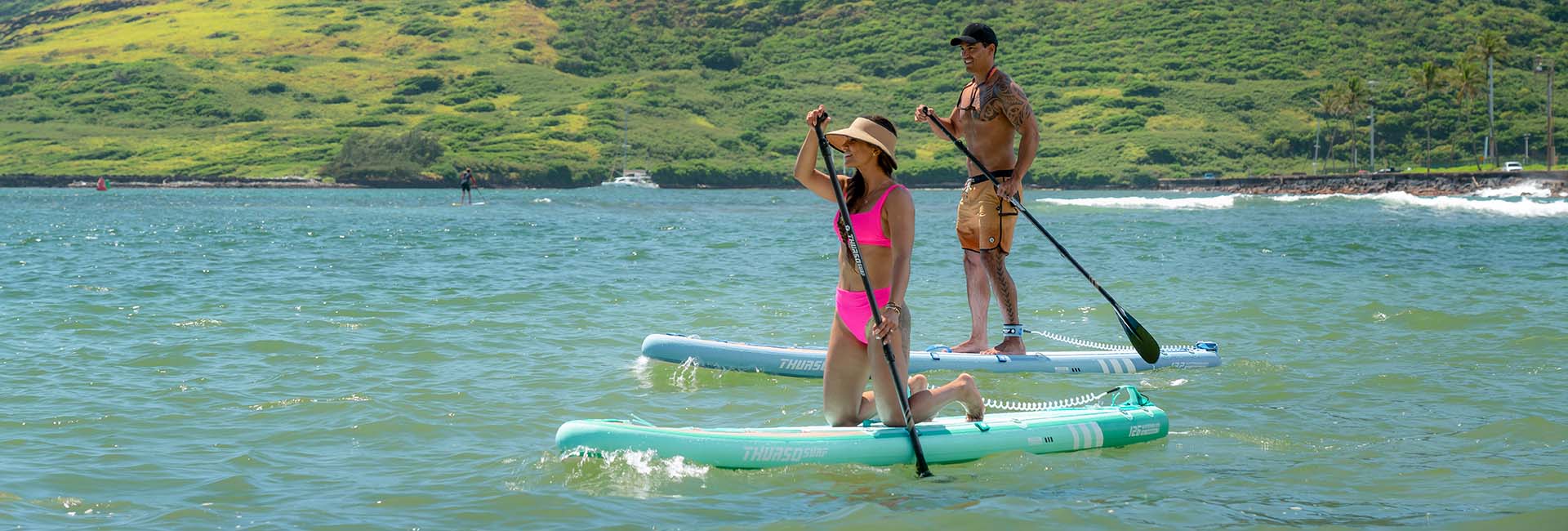
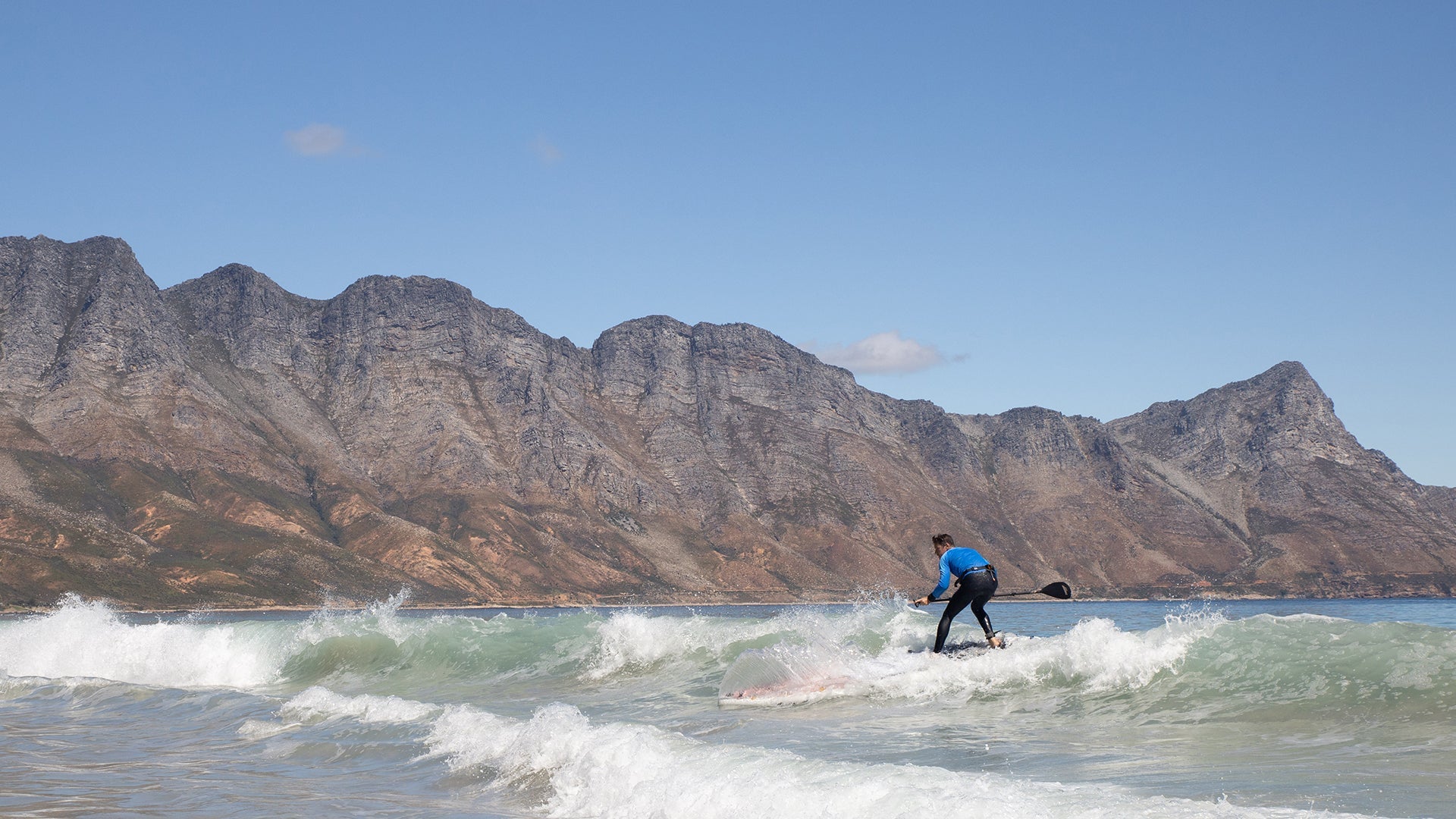
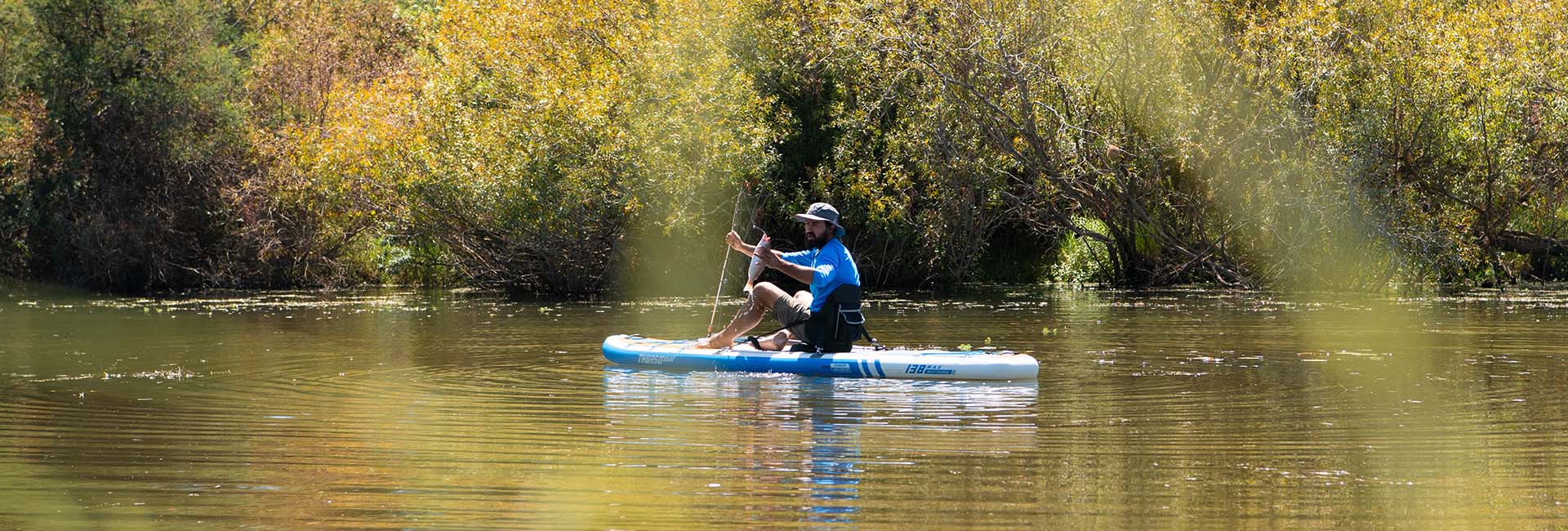
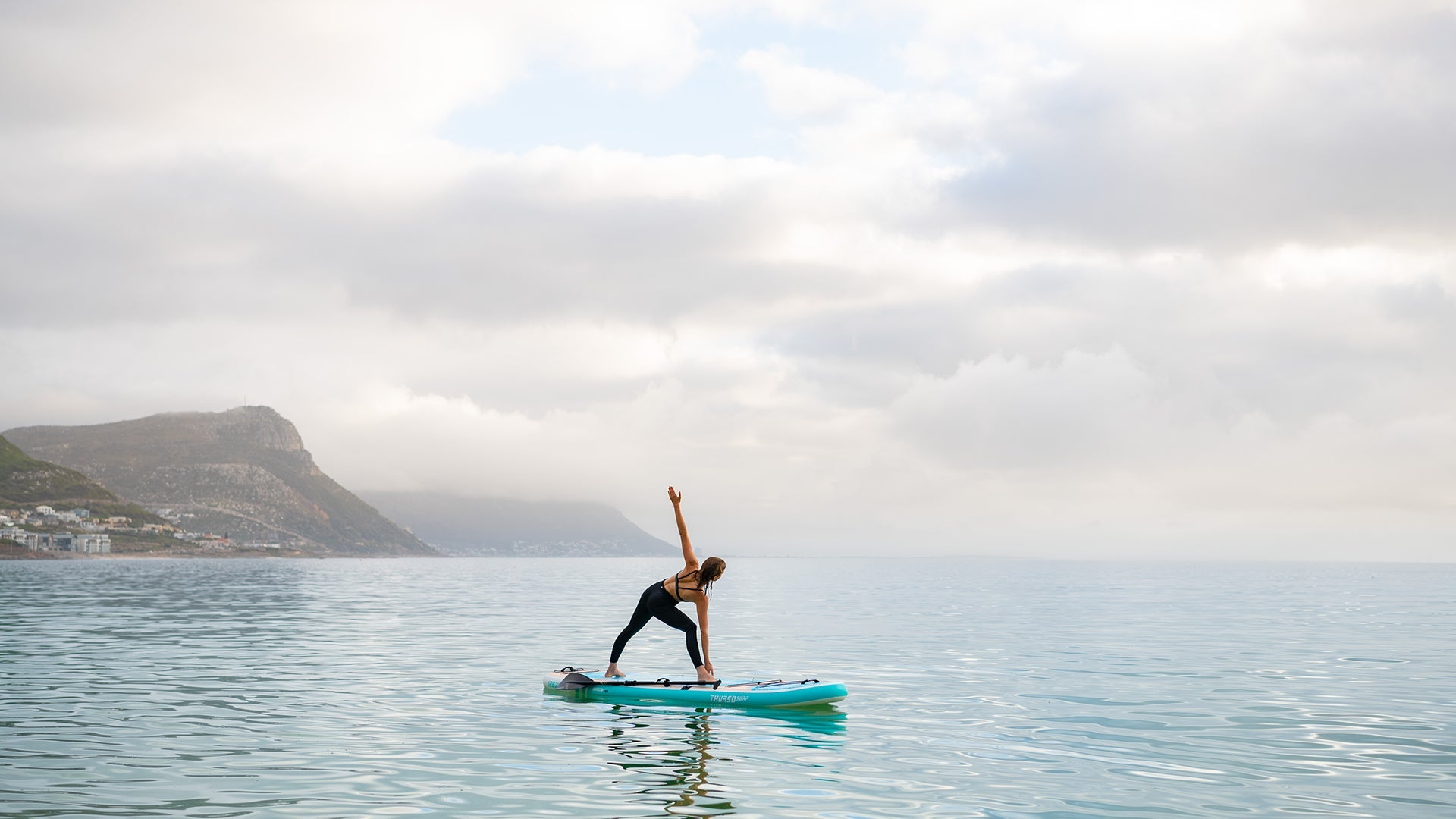
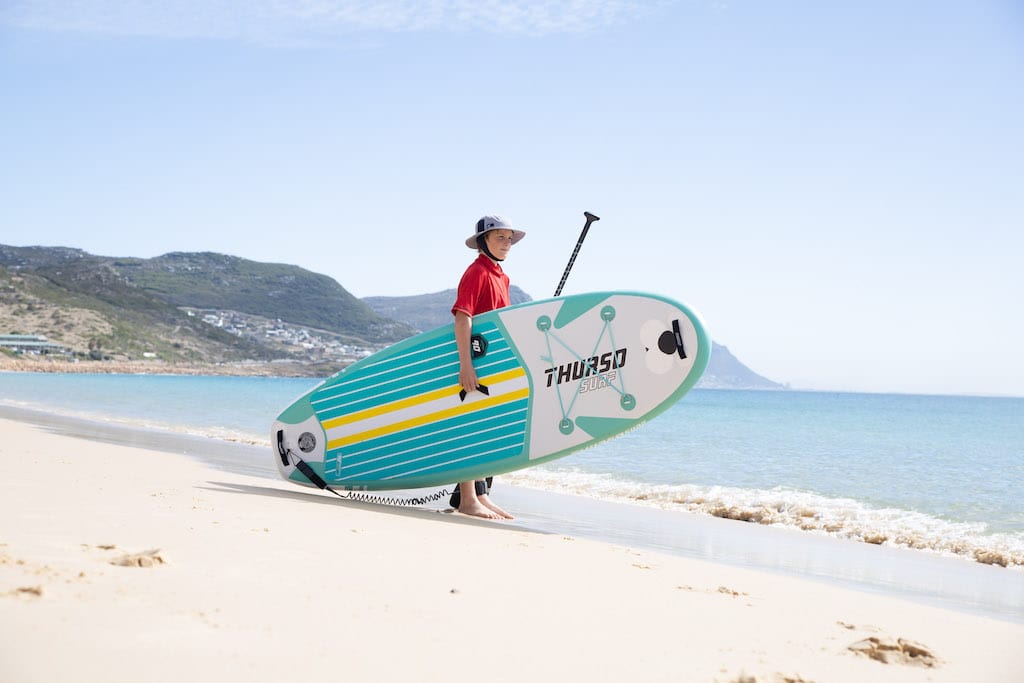
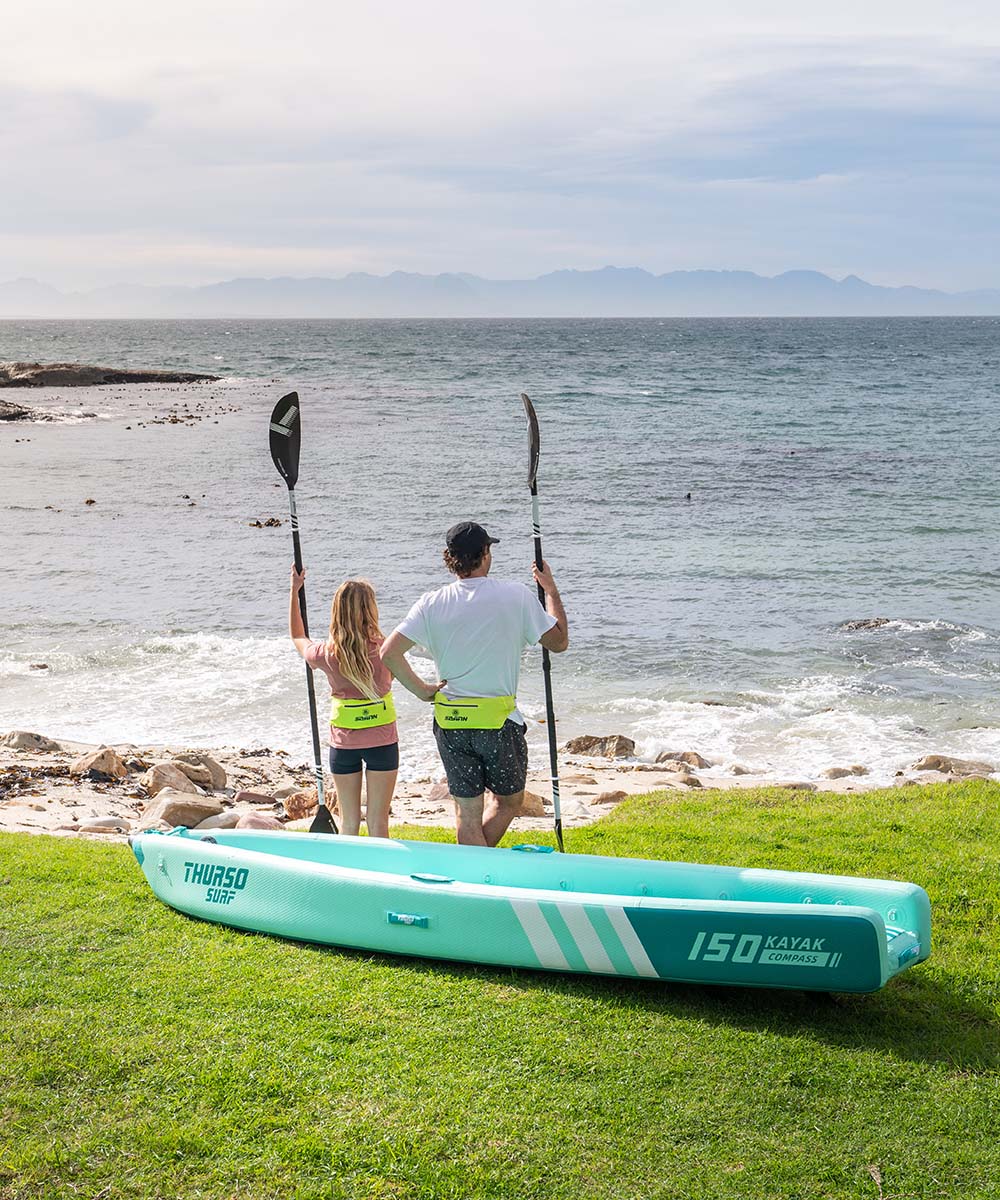
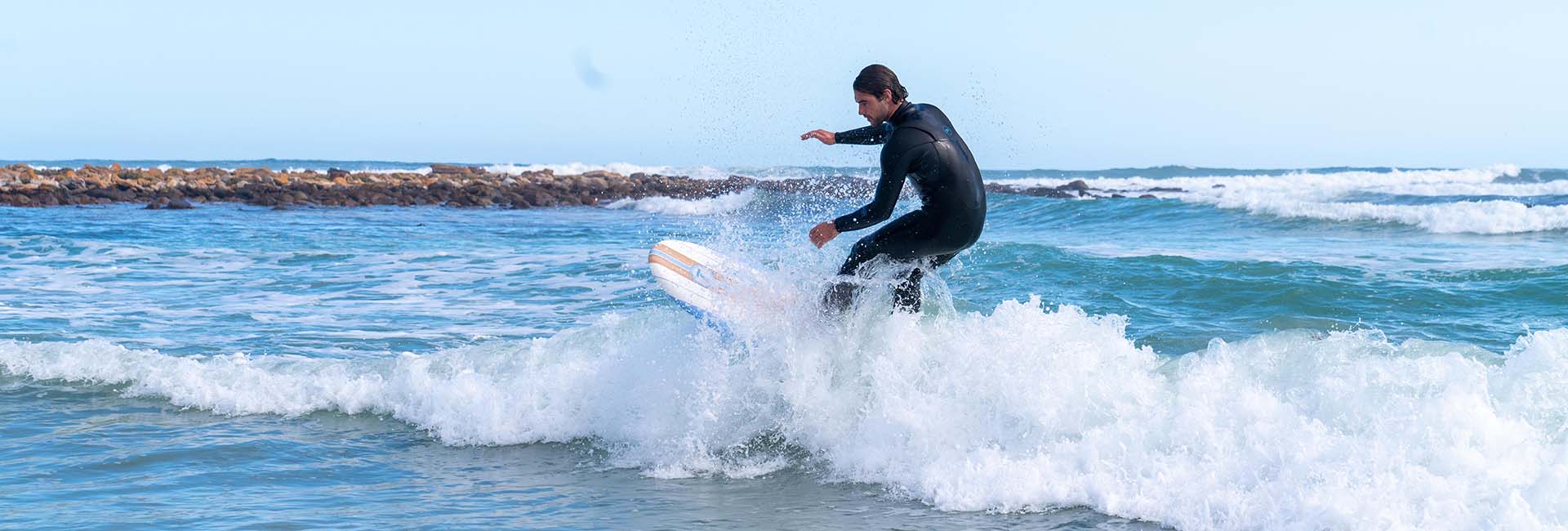
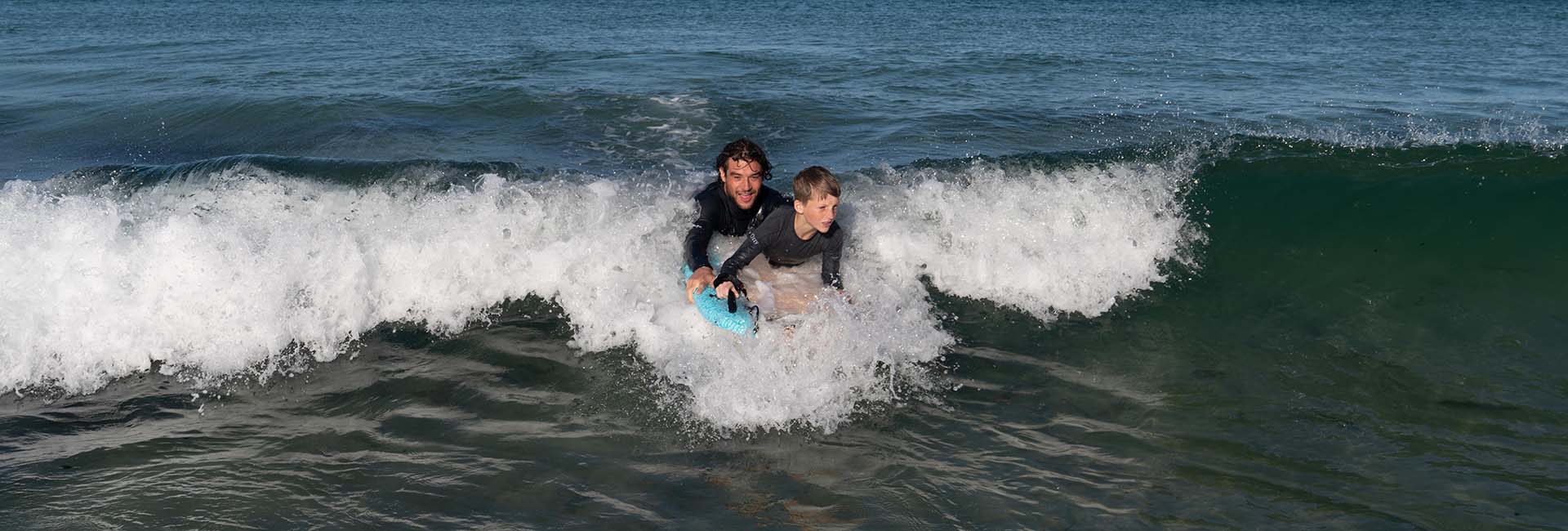
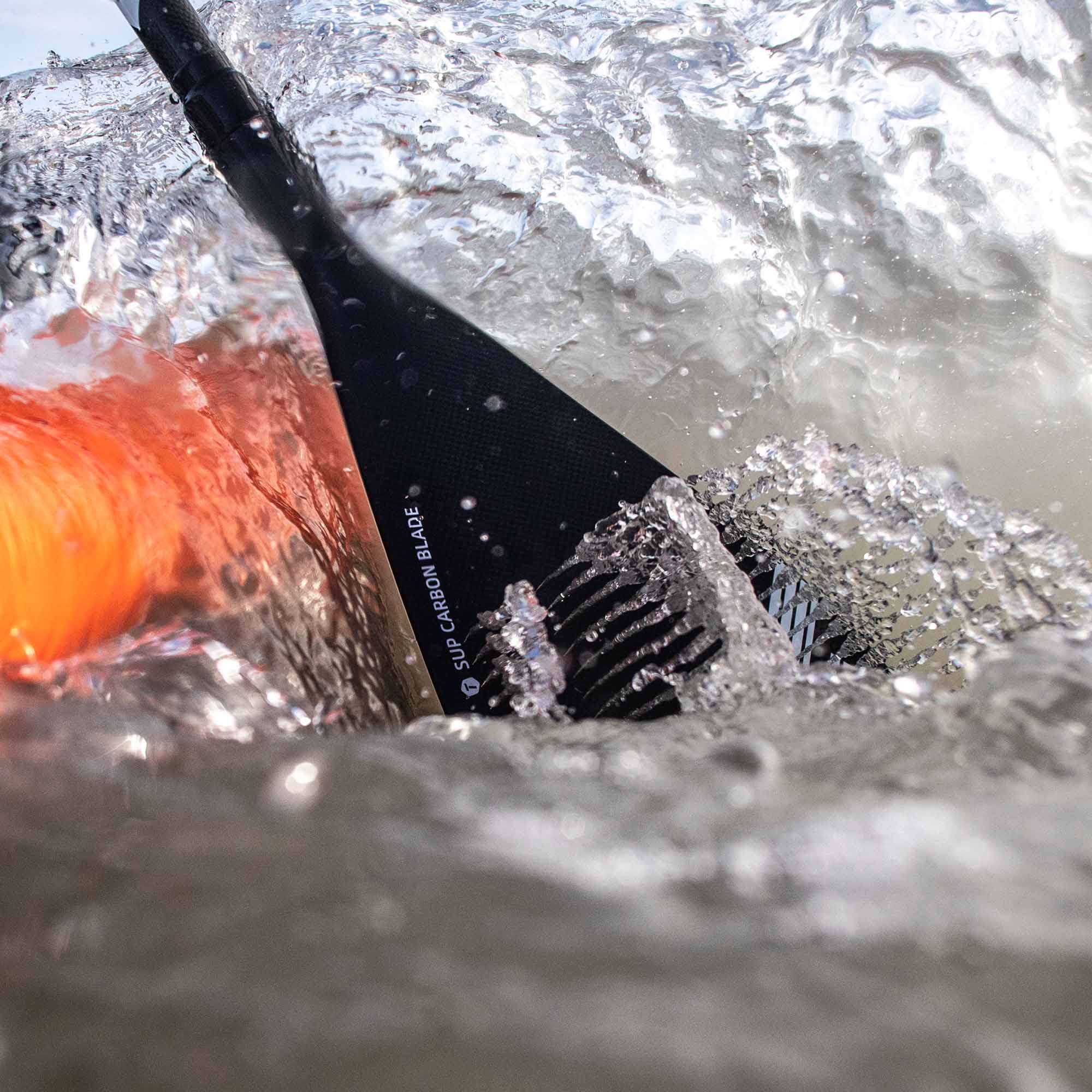
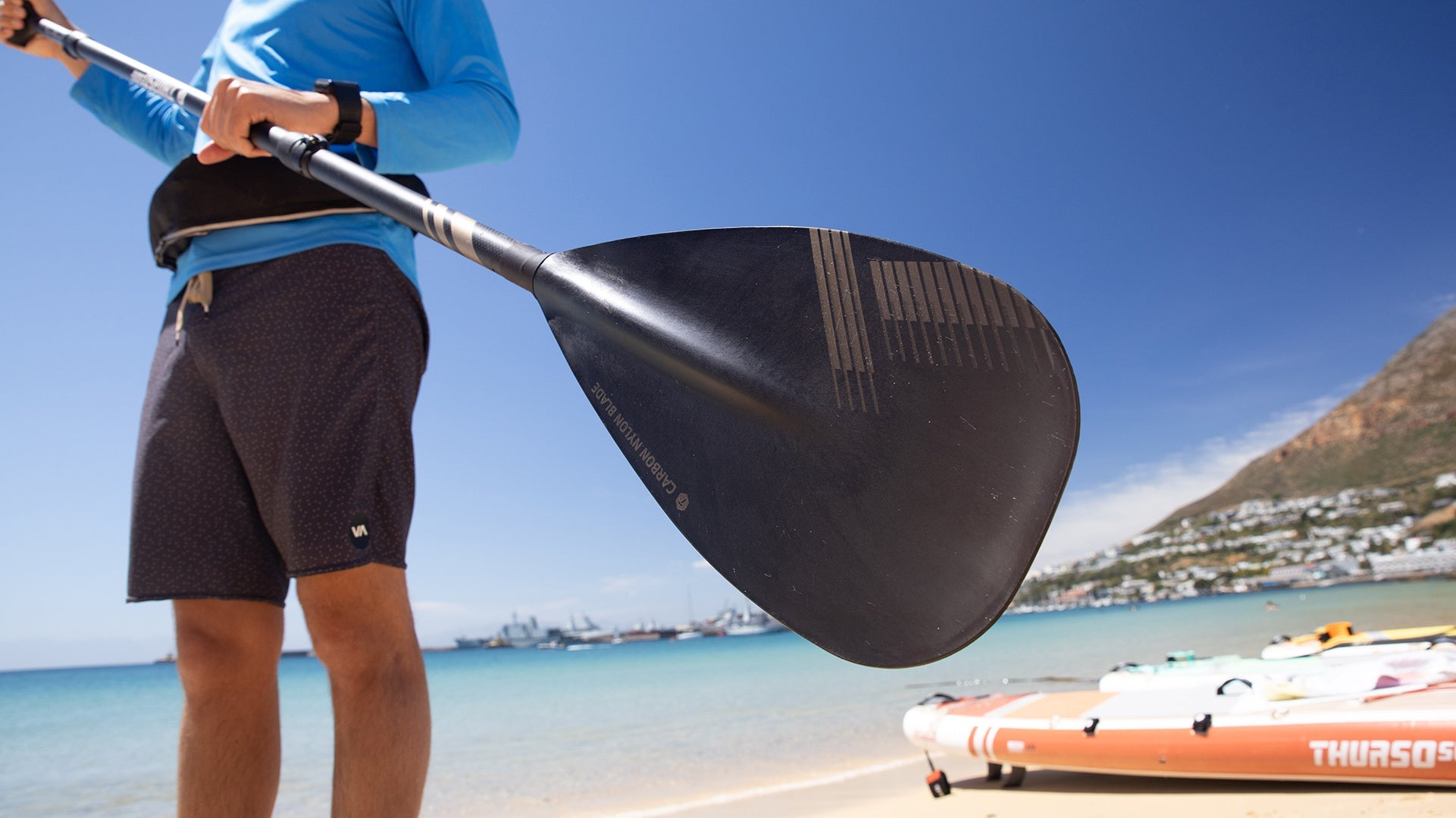
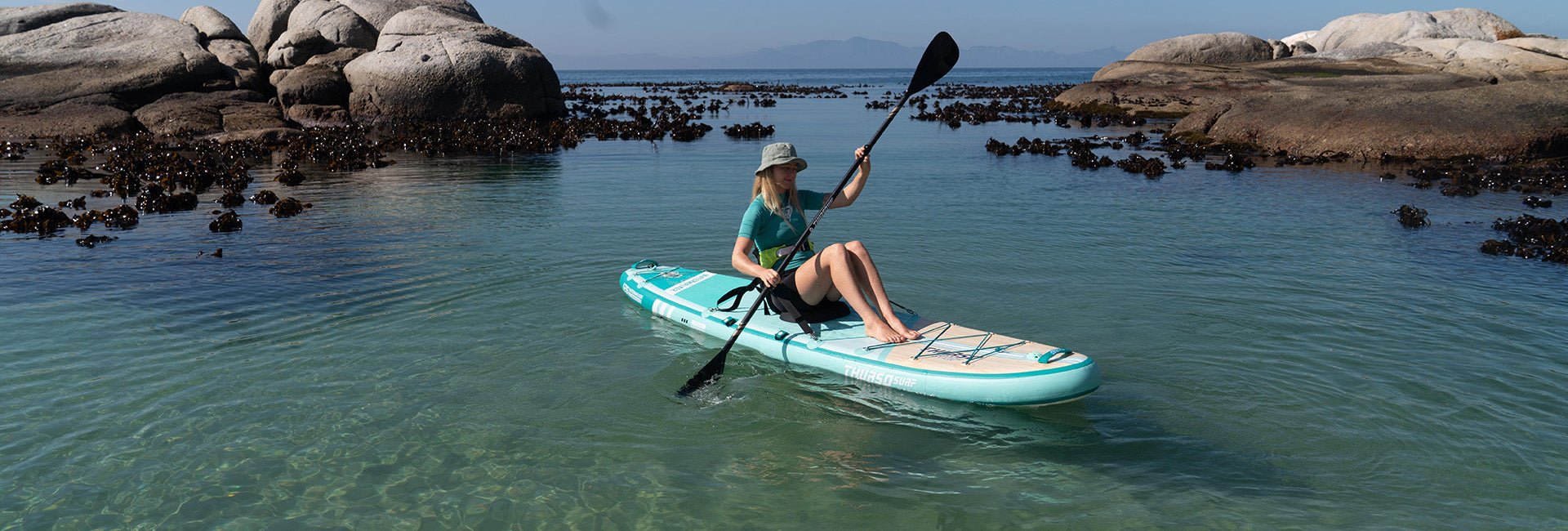
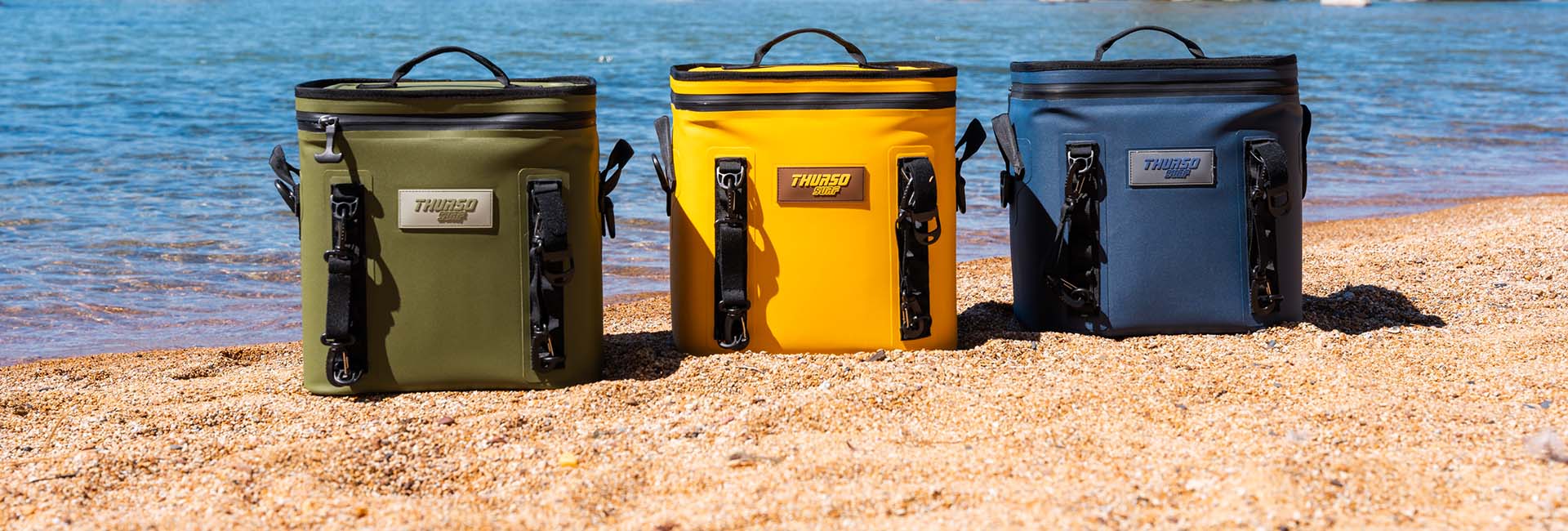
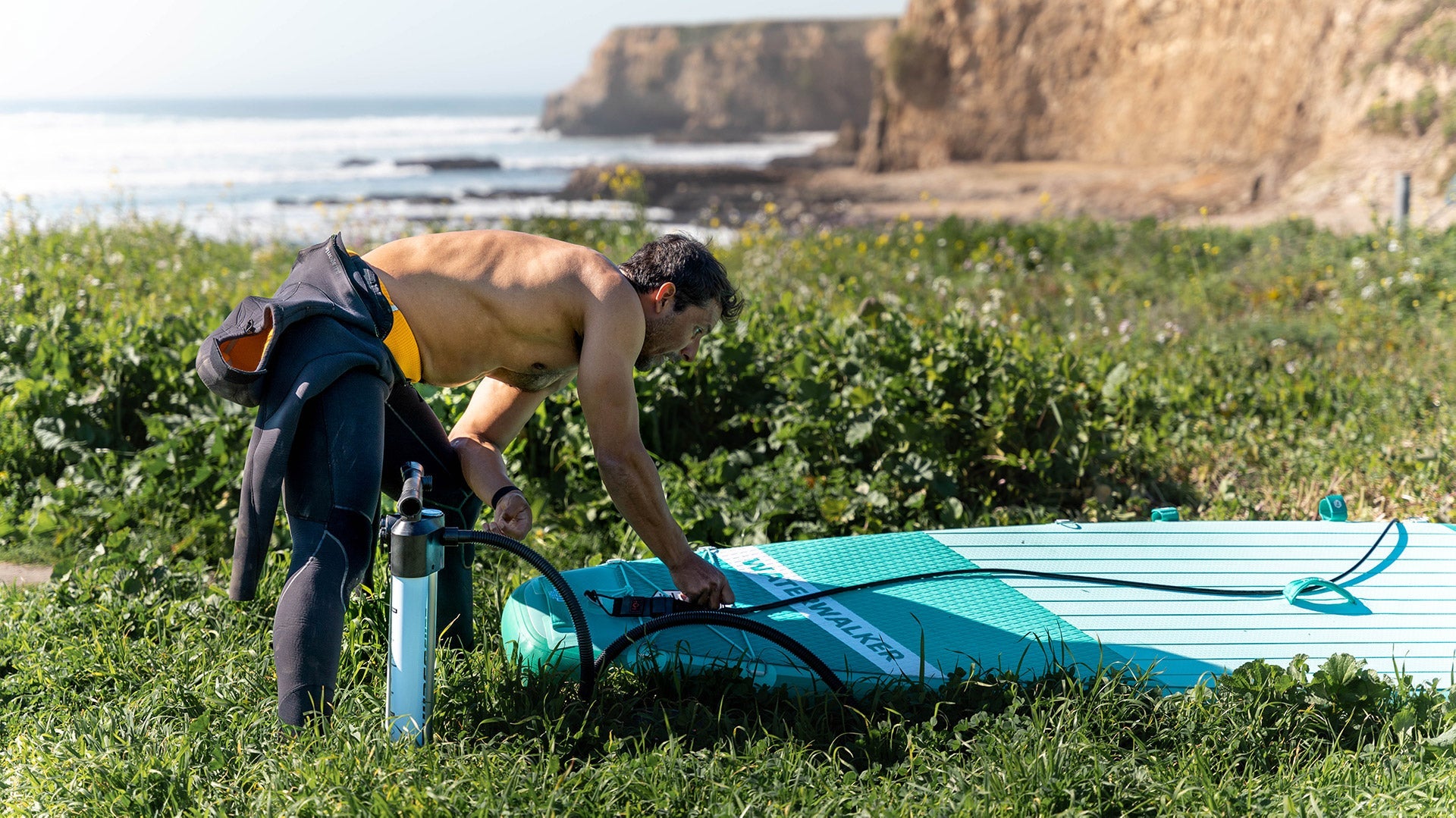
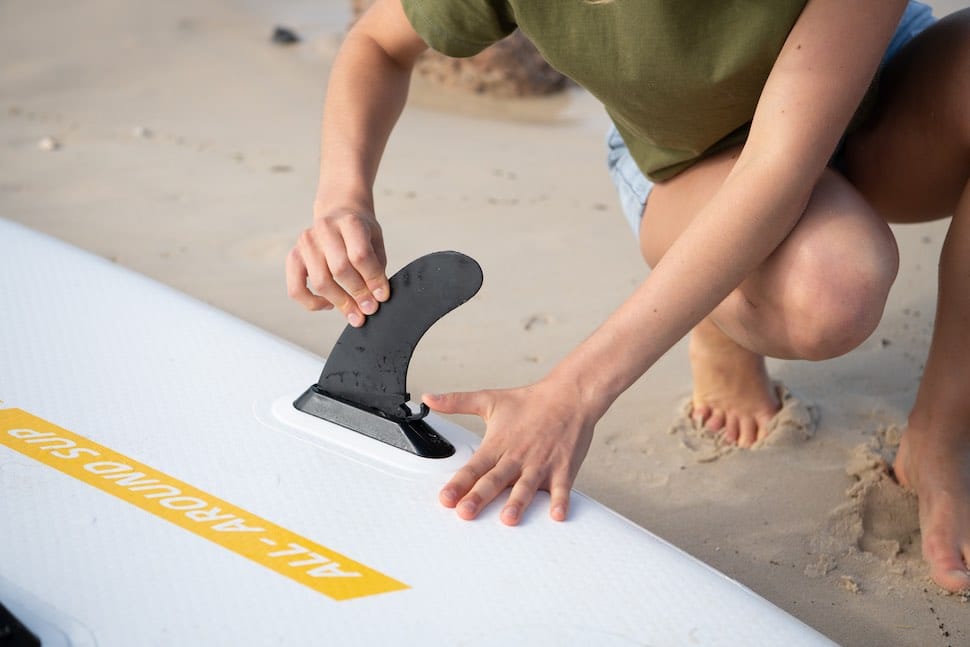
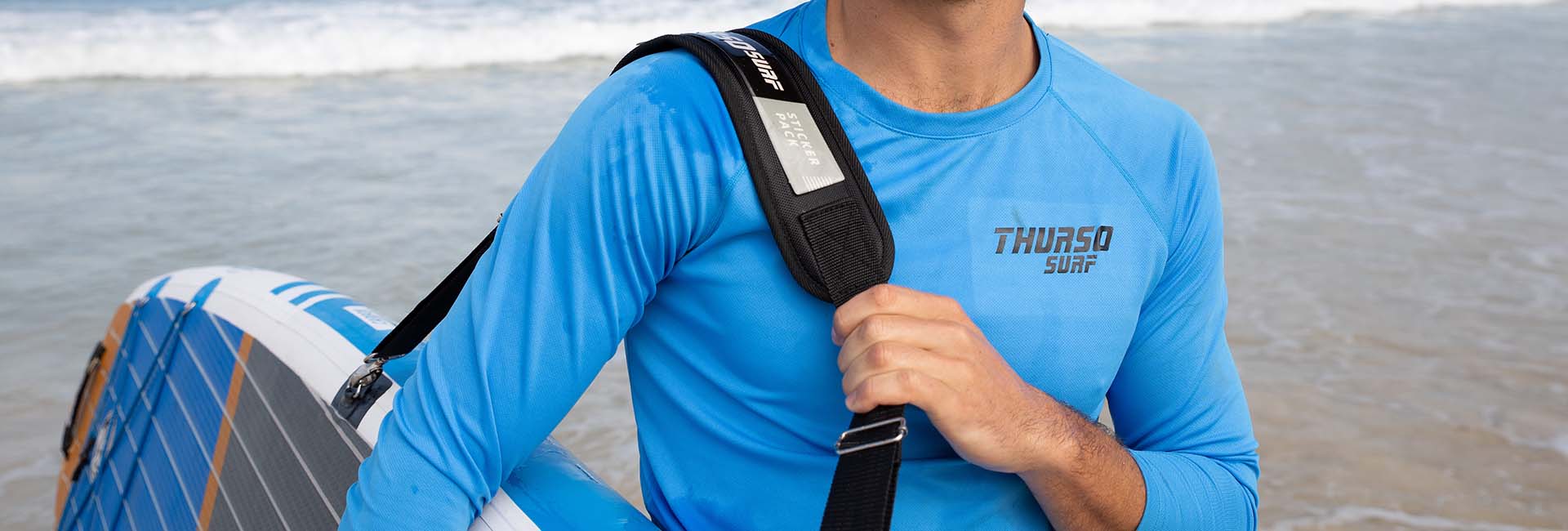



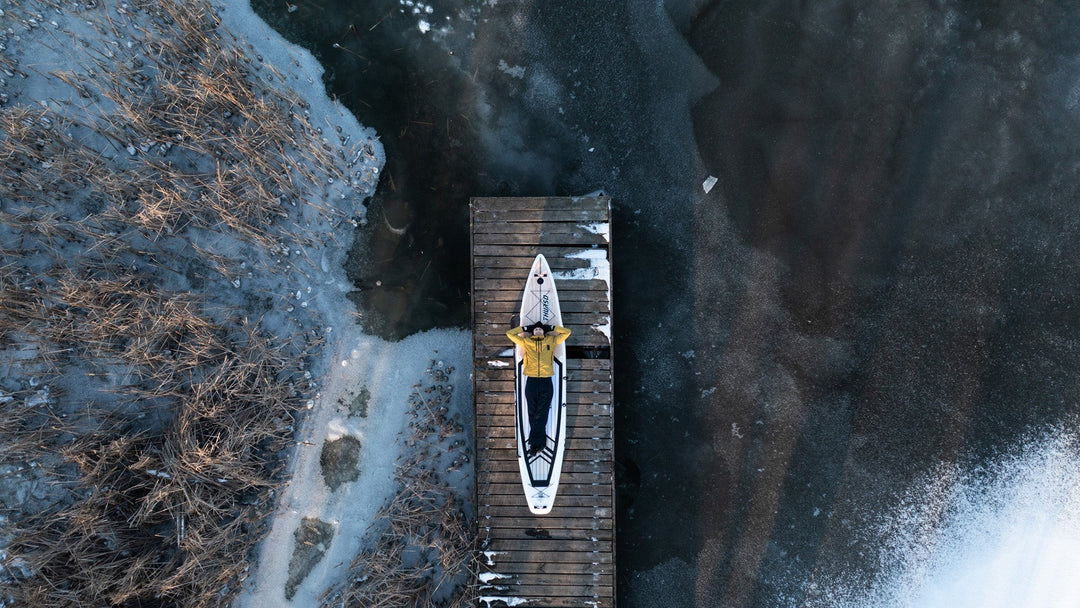
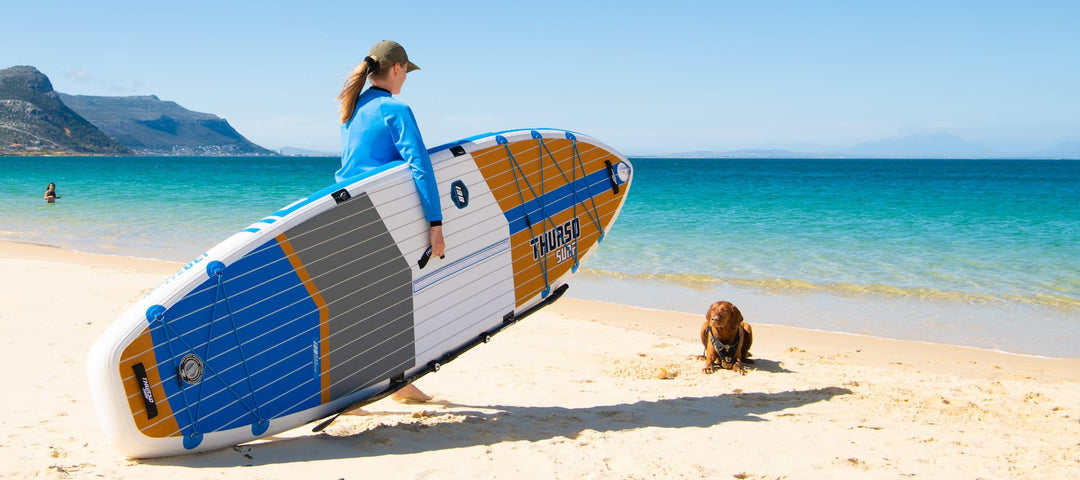
Leave a comment